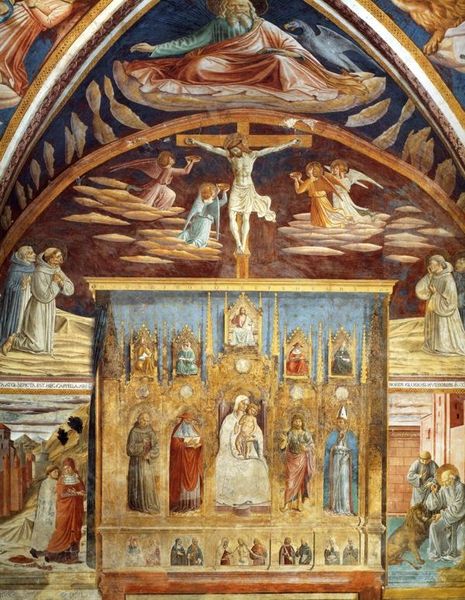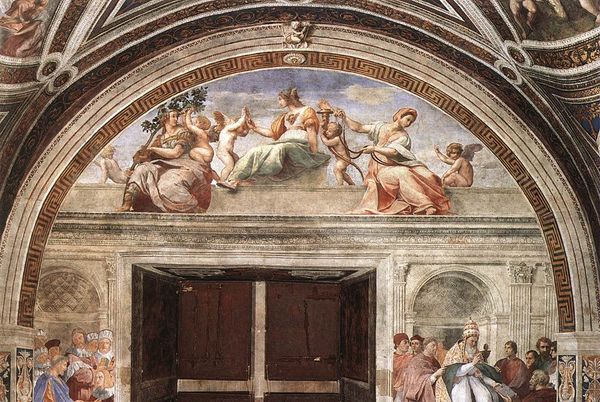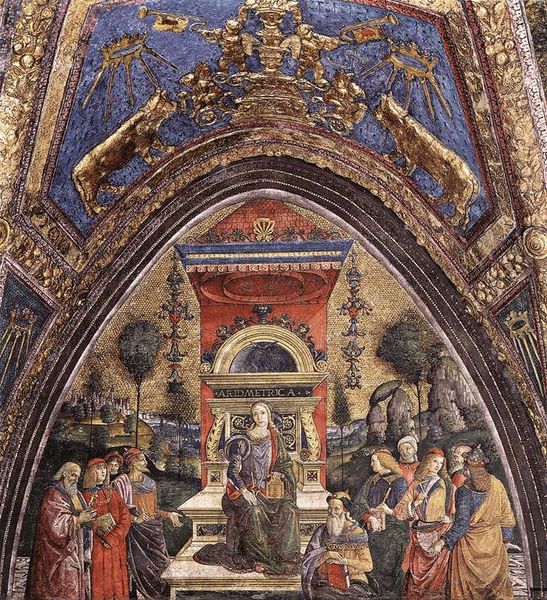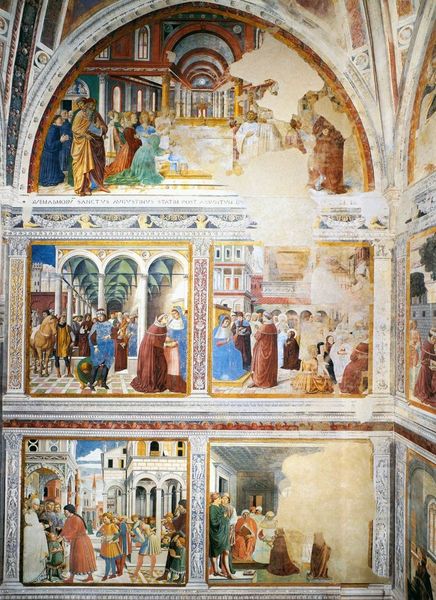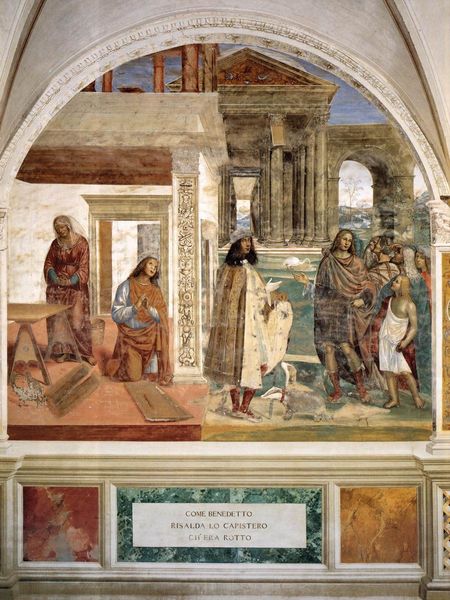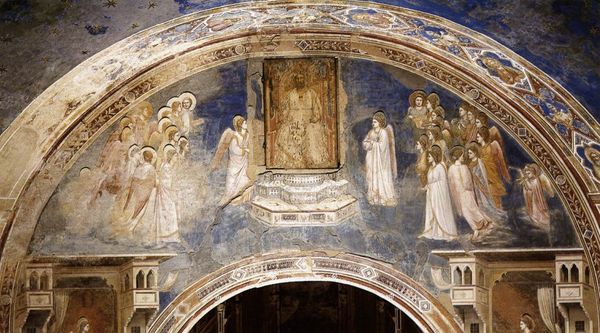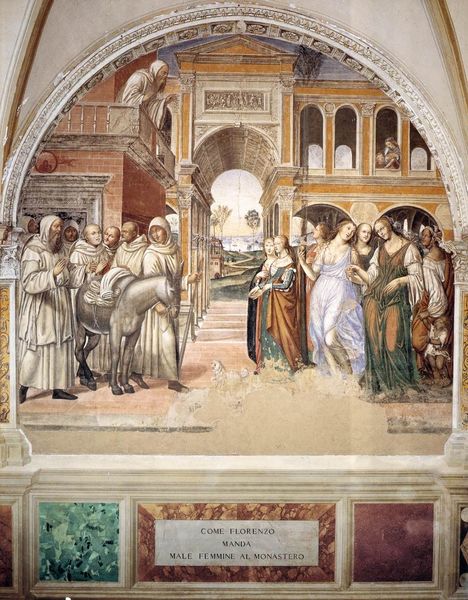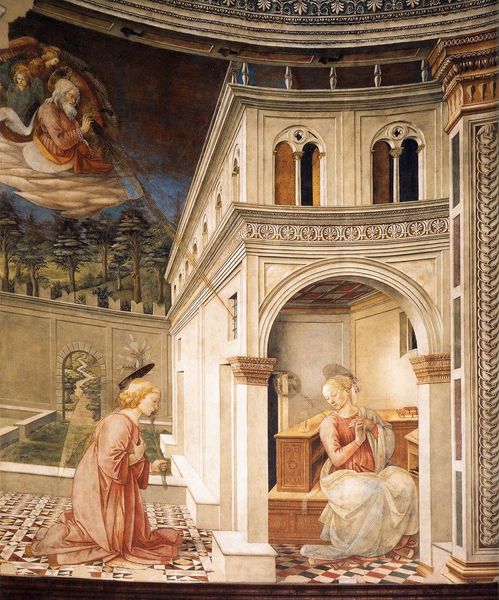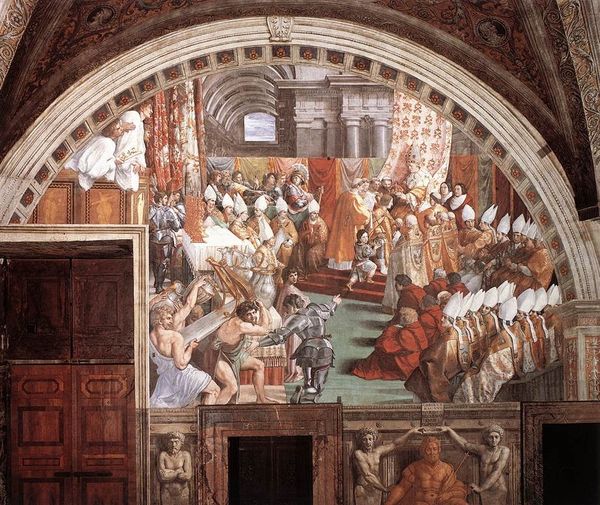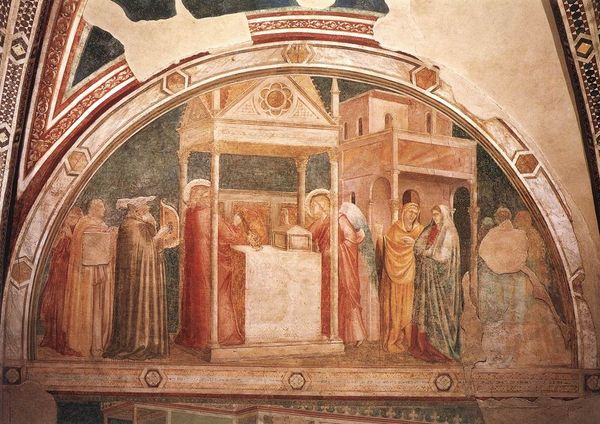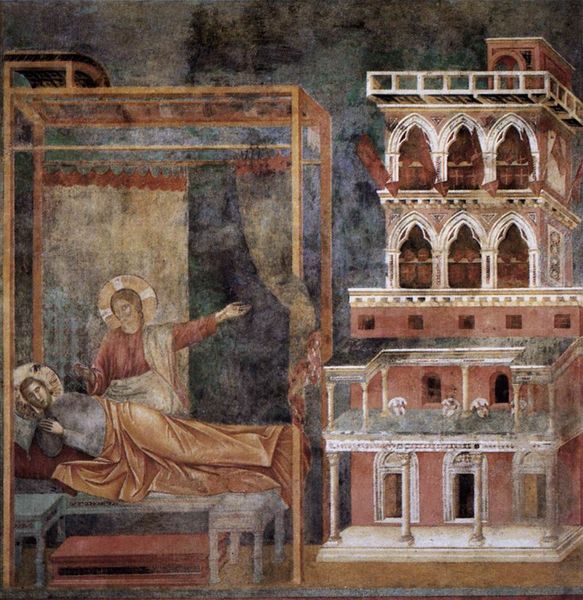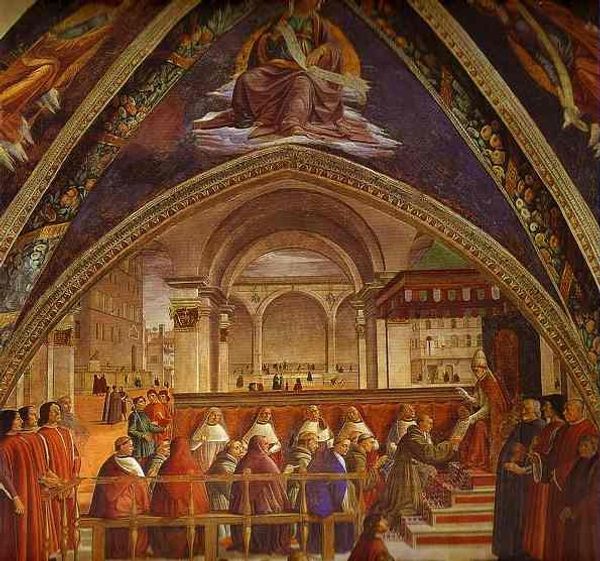
Blessing of the Faithful at Hippo 1465
0:00
0:00
benozzogozzoli
Sant'Agostino Church, San Gimignano, Italy
tempera, painting, fresco, photography, architecture
#
medieval
#
narrative-art
#
tempera
#
painting
#
sculpture
#
holy-places
#
figuration
#
historic architecture
#
fresco
#
traditional architecture
#
photography
#
christianity
#
history-painting
#
italian-renaissance
#
architecture
Copyright: Public domain
Benozzo Gozzoli created this fresco, *Blessing of the Faithful at Hippo*, here in the Church of Sant'Agostino, sometime in the mid-fifteenth century. Fresco means ‘fresh’ in Italian, and refers to the technique of painting directly onto wet plaster. Consider the labor involved in this process. First, the wall has to be prepared with a rough layer of plaster. Then, the artist applies a smooth coat, cartoon in hand, and sets to work before it dries. You can see the joins between sections, the *giornate*, or ‘day’s work.’ Imagine Gozzoli returning day after day, steadily building the image. The artist used pigments ground from minerals and plants, mixed with water to bind them to the lime in the plaster. This chemical reaction makes fresco incredibly durable. The materials reflect this permanence, but also the daily grind of its creation. The painting is integral to the architecture, literally part of the building. The artwork’s meaning lies not only in its subject, but in the work and process that brought it into being.
Comments
No comments
Be the first to comment and join the conversation on the ultimate creative platform.


